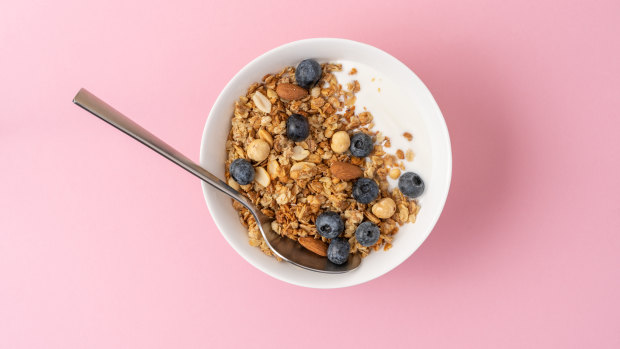By Shane Wright
It’s finally affordable to put milk on your muesli.
And it may be time for the Reserve Bank to take a breath from scaring every person with a mortgage or seeking to rent a roof over their head with threats of another interest rate rise.

Luxury … good inflation figures may enable people to afford blueberries on their milk and muesli.Credit: Getty Images
Ordinarily, a one-percentage point increase in inflation in a single quarter would have inflation hawks warning of imminent pain from the RBA which will hold its next two-day meeting on Monday and Tuesday next week.
But economists and financial markets had a very different response as the figures suggest that while inflation remains elevated, it is coming down in line with the Reserve’s long-term expectations.
Put it this way. One minute before the Australian Bureau of Statistics released the Consumer Price Index data, financial markets put the chance of an interest rate rise next week at one in four (and a 75 per cent chance of no move). Within minutes of digesting the numbers, the same markets reckoned there was a 4 per cent chance of a rate cut and no chance of a rate rise.
The Reserve Bank focuses on underlying measures of inflation which attempt to take out one-off price spikes and present a real feel for price pressures. For instance, the lift in the June quarter was partly attributable to poor weather conditions which pushed up the price of blueberries.
RBA board members may have no time for inflation, but they aren’t ready to hit the economy because blueberries are scarce and expensive.
Those one-off impacts clouded other sights that lingering price pressures, outside the control of the Reserve Bank, are starting to ease.
If you thought breakfast had become far too expensive over the past two years, you were spot on. Milk prices had climbed by an eye-watering 17.9 per cent in the 12 months to December 2022. Over the same period, breakfast cereal prices had lifted by 15.3 per cent.
The latest figures show milk inflation has now fallen to just 2.2 per cent while for breakfast cereals it has fallen to 4.1 per cent.
Milk and cereals had been affected by two issues – the war in Ukraine (which pushed up the prices of every tradeable commodity) and energy. Higher interest rates aren’t going to stop those two problems.
More importantly to the Reserve Bank, underlying inflation increased by 0.8 per cent in the quarter. On an annual basis, it eased for the sixth consecutive quarter to 3.9 per cent, the lowest level since early 2022.
It may not be falling quickly enough for some of those who like to thrash mortgage holders with ever-increasing interest rates, but it is definitely coming down.
The change in thoughts on the Reserve Bank’s moves was also affected by separate figures from the ABS about retail trade.
The value of retail sales lifted by 0.5 per cent in June which the ABS noted was almost certainly due to people racing out for a bargain purchase in the end-of-financial-year sales.
Much more worrisome was its measure of the volume of retail sales. These fell by 0.3 per cent in the June quarter to be down by 0.6 per cent over the past year.
In the two states with the largest mortgages, Sydney and Melbourne, the volume of retail sales has fallen by 1.2 per cent and 1.1 per cent since June last year. They are now back to where they were in 2021.
That sort of fall would ordinarily force the Reserve Bank to consider easing monetary policy.
On a per capita basis, retail volumes have tumbled for eight consecutive quarters. Over the past year, each of us are buying $109 less of stuff – be it muesli, milk or blueberries.
Inflation is still uncomfortably high for both the Reserve Bank and the Albanese government. The government, with policy initiatives such as its $300 energy rebates and its 10 per cent increase to Commonwealth Rent Assistance, is actively pushing down the official measure of inflation.
The RBA’s 13 interest rate increases since May 2022 are also taking heat out of the economy, as the retail trade figures confirmed.
An economy that expanded by just 0.1 per cent in the March quarter, with unemployment up by 0.6 percentage points over the past 12 months, is showing signs of the Reserve’s interest rate lash.
Mortgage holders are still a long way from getting any reprieve from the RBA. Markets don’t believe that will happen until February next year while some economists reckon it could come in November or December.
Either way, just hold back on spraying a few blueberries on the muesli and milk. For now.
Cut through the noise of federal politics with news, views and expert analysis. Subscribers can sign up to our weekly Inside Politics newsletter.